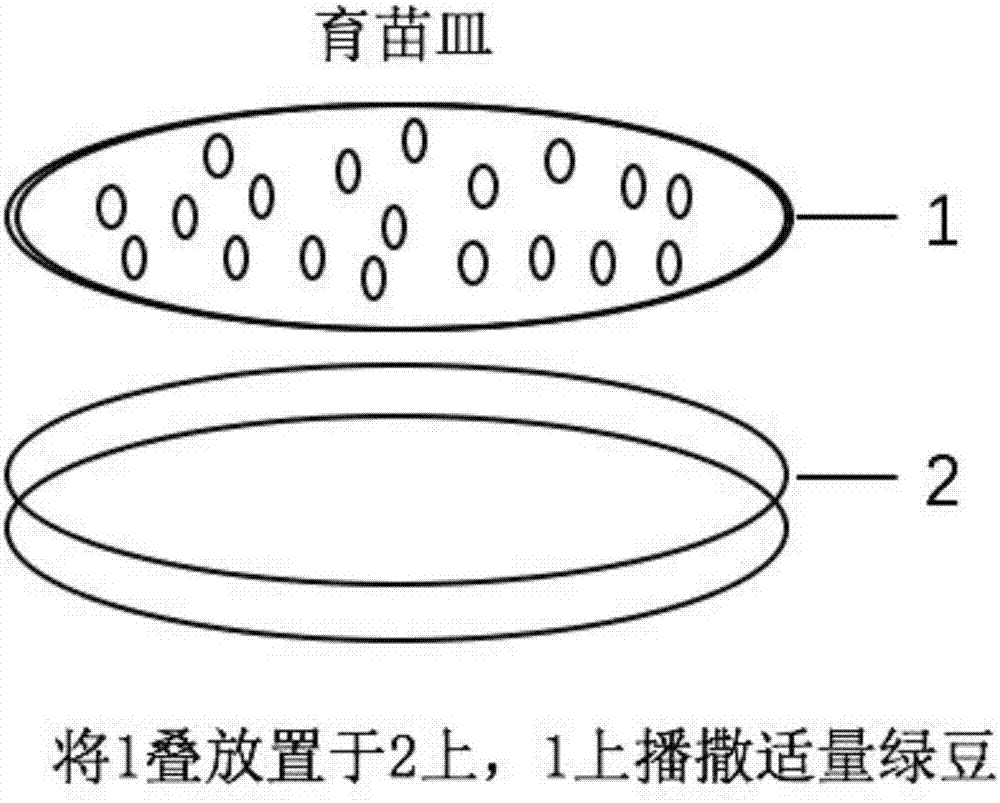Method for breeding adelphocoris suturalis
A technology of Lygus black bug and petri dish, which is applied to the field of artificial propagation of insects, can solve the problems of short preservation time, perishable replacement, large price changes, etc., and achieves the effects of short growth cycle, low cost and easy operation.
- Summary
- Abstract
- Description
- Claims
- Application Information
AI Technical Summary
Problems solved by technology
Method used
Image
Examples
Embodiment 1
[0025] The growth time required for different host plants to meet the requirements of use
[0026] Host plants for testing: potted mung beans, kidney beans, cowpeas, broad beans, and cotton; hydroponic mung beans, cowpeas, broad beans, and cotton, and record the required growth time when the requirements for use are met (Table 1).
[0027] Table 1 The minimum growth time table required when different host plants meet the requirements of use
[0028]
[0029] Note: " / " in the table indicates that the germination rate is too low to be suitable for hydroponics
Embodiment 2
[0031] Effects of different host plants on the growth and development of Lygus melanogaster
[0032] Host plants for testing: potted cowpea, broad bean, and cotton, which are used as test plants after they have grown into plants; hydroponic mung bean seedlings are used as test plants when they are 8-10 cm high; green beans are purchased from the market and treated with sodium hypochlorite (10%) Soak for 30 minutes, then disinfect with 75% alcohol, and dry it for later use.
[0033] Insects to be tested: the newly hatched Lygus nymphs of the same size and size were selected as the insects to be tested.
PUM
 Login to View More
Login to View More Abstract
Description
Claims
Application Information
 Login to View More
Login to View More - R&D
- Intellectual Property
- Life Sciences
- Materials
- Tech Scout
- Unparalleled Data Quality
- Higher Quality Content
- 60% Fewer Hallucinations
Browse by: Latest US Patents, China's latest patents, Technical Efficacy Thesaurus, Application Domain, Technology Topic, Popular Technical Reports.
© 2025 PatSnap. All rights reserved.Legal|Privacy policy|Modern Slavery Act Transparency Statement|Sitemap|About US| Contact US: help@patsnap.com



